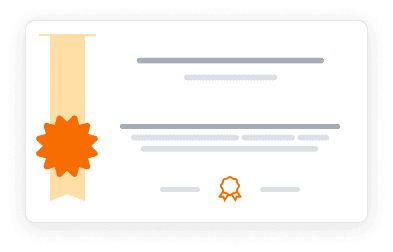Explore and compare US social welfare systems with other developed nations, analyzing structures and outcomes in education, health, and income support.
Explore and compare US social welfare systems with other developed nations, analyzing structures and outcomes in education, health, and income support.
This course cannot be purchased separately - to access the complete learning experience, graded assignments, and earn certificates, you'll need to enroll in the full Social Policy for Social Services & Health Practitioners Specialization program. You can audit this specific course for free to explore the content, which includes access to course materials and lectures. This allows you to learn at your own pace without any financial commitment.
4.8
(150 ratings)
5,804 already enrolled
Instructors:
English
21 languages available
What you'll learn
Understand welfare state development across developed nations
Analyze US social policy structures and outcomes
Compare public and private welfare systems
Evaluate policy effectiveness and reform proposals
Develop critical analysis skills for social policy
Skills you'll gain
This course includes:
3.55 Hours PreRecorded video
4 quizzes
Access on Mobile, Tablet, Desktop
FullTime access
Shareable certificate
Closed caption
Get a Completion Certificate
Share your certificate with prospective employers and your professional network on LinkedIn.
Created by
Provided by

Top companies offer this course to their employees
Top companies provide this course to enhance their employees' skills, ensuring they excel in handling complex projects and drive organizational success.





There are 4 modules in this course
This comprehensive course examines the structure, size, and outcomes of US social policy in comparison to other developed nations. Students analyze different approaches to education, healthcare, and social services across welfare states. The curriculum covers key policy domains including social insurance, public aid, and social services, while exploring the values debate surrounding welfare state scope and effectiveness. Special attention is given to issues of power, oppression, and systemic inequalities.
Social Policy and the Welfare State
Module 1 · 3 Hours to complete
Social Policy Structure
Module 2 · 3 Hours to complete
Comparing U.S. Social Policy with Europe: Investment & Effects
Module 3 · 3 Hours to complete
Does the Welfare State Enrich Us of Impoverish Us
Module 4 · 6 Hours to complete
Fee Structure
Instructor
Advocate for Social Welfare and Community Development
Dr. John Robertson is a dedicated policy lecturer at Columbia University’s School of Social Work, where he teaches courses on Social Welfare Policy, Policy Practice, and Advocacy in Social Work Practice. A resident of Bushwick, Brooklyn, he actively engages with the community through his work at the Duncan Genns elder housing development and participation in local community gardens. His research interests encompass community development, employment and family issues, and support for individuals struggling with substance abuse. Dr. Robertson has contributed to national policy initiatives focused on the challenges faced by low-income families, including their employment and access to public assistance. With a decade of experience teaching lobbying at the Missouri State Legislature, he has been instrumental in advocating for significant legislation such as the Comprehensive Immigration Reform Act of 2006. Drawing from his background as a former monk, he embodies the Franciscan values of humility and compassion, believing in the importance of being present with those who are struggling. He holds a BA in Economics from St. John’s College, an MSW from Rutgers University, and a PhD in Labor Economics and Social Policy from Columbia University, equipping him with a comprehensive understanding of social issues and policy advocacy.
Testimonials
Testimonials and success stories are a testament to the quality of this program and its impact on your career and learning journey. Be the first to help others make an informed decision by sharing your review of the course.
Frequently asked questions
Below are some of the most commonly asked questions about this course. We aim to provide clear and concise answers to help you better understand the course content, structure, and any other relevant information. If you have any additional questions or if your question is not listed here, please don't hesitate to reach out to our support team for further assistance.



